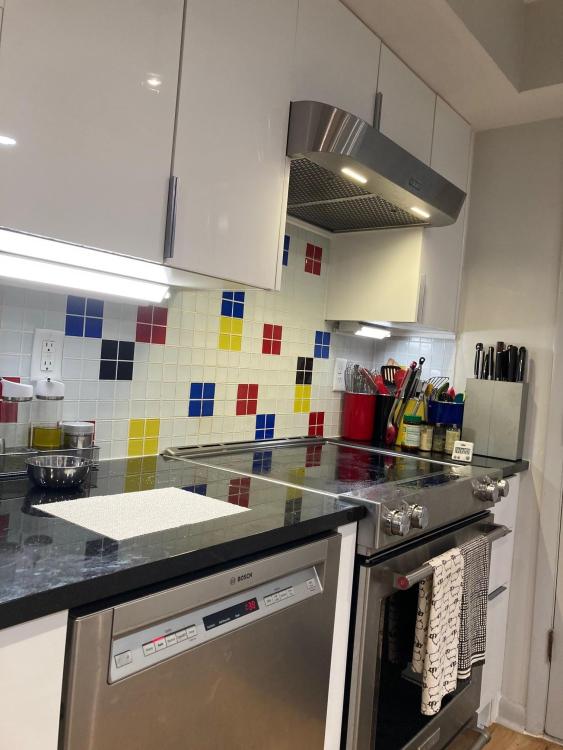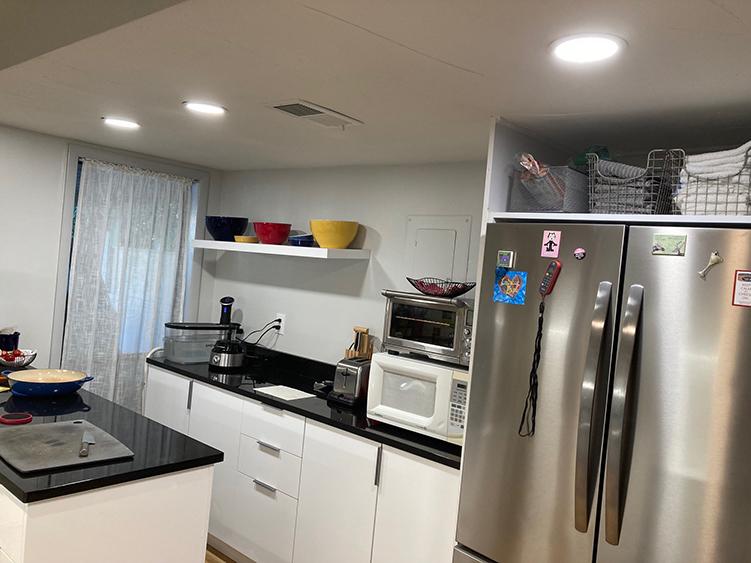-
Posts
8,094 -
Joined
-
Last visited
Content Type
Profiles
Forums
Store
Help Articles
Everything posted by Dave the Cook
-
Given the level of food knowledge and cooking expertise exhibited on this forum, I know I risk insulting one or more members by asking this. Apologies in advance. What kind of potatoes are you folks using? I ask because there are two basic types of potatoes: waxy and floury. Waxy potatoes are great for roasting. steaming and boiling. However, if you try and mash or whip them (or, as I once did, run them through a food processor), you'll get an express ticket to gluetown. Some examples are Norland, Kennebec and Pontiac. They are usually red- or white (actually pale tan)-skinned, and the skin is relatively thin. If you're mashing or whipping, you want a floury potato. Some examples are Russet (often called Idaho or Burbank), Norkotah, King Edward and Maris Piper. They're usually brown skinned. and the skin is kind of rough. There is a third type, most often called a gold potato (Yukon golds are the most common in North America). These fall between waxy and floury in texture, and, while they can be roasted or mashed with varying success, they excel in gratins, where starch lends them flavor and volume, and the "wax" (it's not really wax) provides structure that fades as the potatoes are cooked. Of course, there are lots of other potato types: purple, fingerling, petites, etc. Most are of the waxy type; few of them are suitable for mashing.
-
Here's my take on green beans with mustard/lemon/butter: recipe. Maybe it will help you with proportions.
-
"Shellfish-of-some-type au gratin" is fairly common, at least along the east coast. Pierre Franey, a New Yorker (by way of Yonne, France), and from whom I learned as much about cooking as anyone, even had a recipe in one of his New York Times columns for crabmeat au gratin. In the 1960s, it was known to be a favorite of the Duchess of Windsor. I'll note with amusement his recommendation that it be served accompanied by rice with mushrooms and pistachios.
-
I just returned from the grocery store, where the asking price for a dozen store-brand large chicken eggs was $5.39 (45 cents/egg). Some observations: This was at Publix, which has a big presence in Atlanta. Still this price is anomalous. A dozen eggs at Kroger is $4.29 (36 cents) ; Walmart wants $5.17 (43 cents). These three chains comprise 75% of the Atlanta market. There weren't many eggs to be had at all. At Publix, the cooler was about 40% full. A year ago, it would have been 100% occupied. The store brand was available in a 1-1/2 dozen carton. They were $7.82, or 43 cents/egg, actually slightly more expensive than by the dozen. A 2-1/2 dozen carton was available for $12.13, which is 40 cents per egg -- not what I would call a great quantity discount. Eggland's Best, a premium brand (though it's hard to figure out why from what's printed on their package), was a bit less than the store-brand: $5.26. They had also been packed only two days earlier than the store-brand. Usually, this brand is about 20% more expensive than the store brand, and as much as ten days older. (I note this because I am from the church that preaches that when it comes to eggs, age is almost everything.) Just because Kroger is advertising (relatively) cheap eggs, it doesn't mean they actually have Grade A USDA large eggs. They've been known to "suddenly" run out of advertised items. Even at five bucks a dozen, large eggs (as defined by the USDA) are still an inexpensive food source ($3.33/lb).
-
Stew? I like James Peterson's description of cassoulet: ". . . it's just a French version of pork and beans."
-
Oh hell, it was our very first eGullet Cook-off: more than you want (including what you need) to know, about Cassoulet.
-

Chili Traditions and Regional Variations
Dave the Cook replied to a topic in Food Traditions & Culture
I did this once. My colleagues in Switzerland wanted to taste a "real" American chili. So my host and I exchanged lists of ingredients, including this fateful declaration: "oh, we have cumin! Seeds. right?" So I paid extra baggage fees to cart canned beans and tomatoes and dried chiles across the Atlantic. On a festive Sunday night, I spent the better part of a beautiful Alpine afternoon to put together a chili using very expensive Swiss beef, without telling everyone what I was doing. In Switzerland, anyway, "cumin' and "caraway" are the same thing. They look very similar in their seed form, so I didn't know what was wrong until it was way too late. When the dish was finally served, I was complimented effusively on my take on goulash. The beans were a nice touch. -
A combination of ketchup and mayonnaise. A Heinz product, though people have been making it themselves for nearly ever.
-
Right. They can't avoid inspection, but I know a few organic beef producers who eschew grading for this reason (organic beef is expensive as it is). Also, beef from steers raised on grass might not align well with grading standards designed with corn-finished beef in mind.
-
Based on my experience, this does not happen.
-
The bottle in my fridge is at least 19 years old. I acquired it when my then BIL*, with whom I was grocery shopping on a Florida vacation, threw a bottle into each of our carts, saying "I haven't seen this in years. Take it -- you be glad you did." So I took it, and have carted it from house to house to house to house to house, using it once or maybe twice. I was about to throw it away the other day, after finding it guilty of taking up needed space in the refrigerator, but my hand was stayed by none other than @JAZ, who said, "Keep that! I use it in chicken salad." So we're using it up -- two teaspoons at a time. * For those trying to map the geography of Durkee usage, said BIL was born in northeast Ohio, and lived there until he got his BA. The last time our families vacationed together was 2003.
-
I don't understand. Change what water, and why?
-
With those requirements, I'd start haunting places like Home Goods.
-
Without checking, I wonder if James Peterson might have channeled Olney. He's a known devotee.
-
I'm sure things will work out fine. It's pretty hard to go wrong these days. Just buy more lighting than you're sure you'll need, and install dimmers. Adjust your levels, and never give lighting another thought. I'll only ask you to be careful. I don't want to be a jerk about this, but while your electrician is probably right, he's not a lighting engineer, no matter what his level of enthusiasm. Put it this way: I'm an ice cream enthusiast, I've made a lot of it, and I have strong opinions about it. That doesn't mean that I can make ice cream that's as good as yours. By the way, you can figure out precise answers to these questions on your own, if you have enough information and graph paper, own a tape measure, and don't mind a lot of math. Also, I'm sure you won't be surprised to find out that there are computer programs that can do it. For some reason they quite expensive.
-
Functionally, downlights can easily replace pendants. Just make sure you'll have enough light to do island-related tasks, and that the beam angles are wide enough to completely cover the island. Is that the reason for using 4" lights, rather than the 6" used elsewhere? ETA: it's possible to design a lighting plan that obviates the need for "extra" lighting over the island. Much depends on the size and shape of your room, the size of your island and the height of your ceiling.
-
You re right, I'm sure it was 20-amp. I carried that 18-amp number (what said toaster oven required) around for so long that it got burned into my memory cells. That's because it IS brighter to human eyes. Most household fixtures are 2700K. Many have a switch that will change them from 2700 to 3000Kor 3500K (sometimes 4000K). We like things bright, but 6000K is a little too blue for us. YMMV.
-
Color temperature turns out to be very important.
-
Sorry to disappoint, if you were hoping for a saga of despair, dashed hopes and eventual victory over the forces of evil. But as it turns out, the lighting was the least traumatic part of the project. I'll skip the bulk of the story of our kitchen remodel, which took either two months or eleven years, depending on how you count. This is just about the lighting. I moved in here in 2005. This is what the place looked like: There was a 24" fluorescent bar over the sink, two 60W incandescents in the range hood, a ceiling fan with a light kit attached, and finally, a 4'W x 8'L x 1'D recess in the ceiling, which housed four 48" twin fluorecent fixtures. You can see the fan and the recessed (such as it is) lighting in the last photo. Note that the ceiling is 7'. Over the next few years, we made some changes. (Please excuse the mess you see here. These pics were taken in the middle of renovation, so things were, shall we say, chaotic -- not that the kitchen wasn't normally pretty chaotic. Hence the need for renovation!) I added fluorescent work lights over two work areas, one a makeshift island: and the other the dishwashing/coffeemaking area. You can sort-of see in the photo above that I also removed the prismatic plex that covered the recessed fluorescents, mostly to provide more light, but it had the unexpected effect of making the entire ceiling seem higher than its agoraphobic-inducing seven feet. So when we 1) got serious about remodeling; 2) could once again afford it, we kind of did it all at once, or at least in a tight sequence. We replaced the fluorescents with pendants (the ceiling here, where the fluorescents used to be, is 8'): installed flush-mount LED lights over a new prep area and the coffee equipment: and added undercabinet LED lighting to the wall cabinets on the sink/range wall (the range hood has two led lamps as well); Between getting rid of the original fluorescents, addition of bright white cabinetry and upgraded lighting, we don't notice the short ceilings any more. The kitchen is bright (one contractor said it looked like a hospital operating room) and a pleasure to work in. Obviously, there was a lot of other work done, but that's for a different topic. The kitchen lighting was about $2200, including labor. It's impossible at this time to break it out, but that included installation of a new 18-amp circuit to safely accommodate a power-sucking toaster oven, as well as adding a new outlet to an existing circuit and rewiring another.
-
When we remodeled our kitchen a couple of years ago, we settled on a combination of ambient lighting and task lighting. The ambient was to light up the room; the task was to hit specific work areas: cutting boards, the sink, the small appliance area (mainly the coffeemaker and coffee grinders). There's much more to the story (which I'm happy to tell if peeps want), but we ended up with flat LED downlights to provide part of the ambient lighting; the rest of the ambient lighting was provided by replacing three two-bulb fluorescent fixtures with LED-equipped pendants. For task lighting, we had these installed (well not these, but something similar). Everyone (including kitchen designers and subsequent lighting designers) has called their friends to tell them about these lights. I'm really surprised they're not more popular.
-

Best commercially available red wine vinegar for everyday use?
Dave the Cook replied to a topic in Kitchen Consumer
I'm not ignoring you. I just want to hear what everyone else has to say. You're probably right, but if I gave up space to every "very easy" project for creating an everyday food item, I wouldn't have room to actually cook! -

Best commercially available red wine vinegar for everyday use?
Dave the Cook replied to a topic in Kitchen Consumer
I asked myself how much I'd pay for a 12 oz. bottle of wine vinegar. I answered, "Nine dollars seems reasonable." That's 75 cents per ounce. Yes, it's a bit random, but that's my number, for now. Is it too high? Too low? The topic title says "for daily use," so the answer to your second question is obviously "Yes." But, to be honest, we don't really use it every day. Between vinaigrettes, marinades and balancing a sauce (usually something long-cooked), and yes, doing a little quick pickling, it's maybe three times a week on average. Now that I think about it, we probably use as much rice and sherry vinegar as red-wine. Your point being what? Do you really think that wasn't the first thing I did? I wanted the opinion of people here. Indeed they are. How often do you use it? Saveur magazine says Colavita is the best red wine vinegar around (I get 23 cents per ounce from Amazon, but whatevs). -

Best commercially available red wine vinegar for everyday use?
Dave the Cook replied to a topic in Kitchen Consumer
From a group that seems to have an opinion about nearly everything food-related, this is a little surprising. Maybe everyone else is happy with Pompeian, Regina or Napa Valley Natural?













